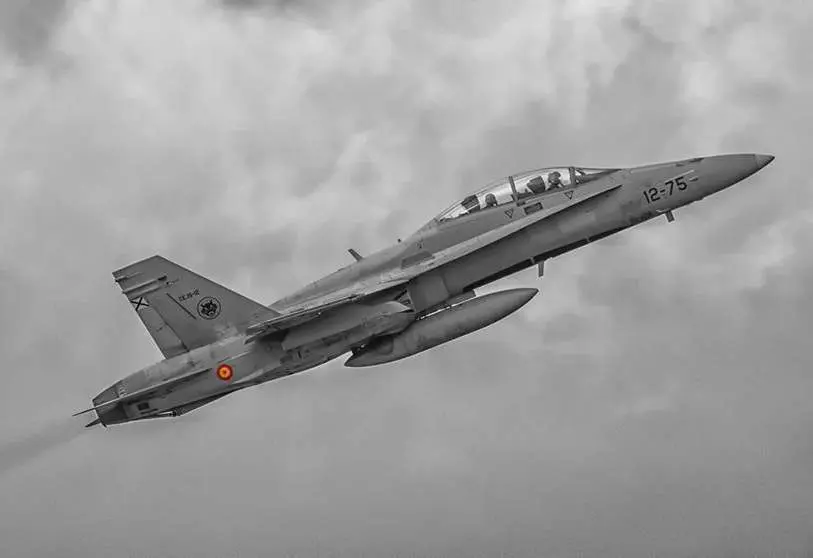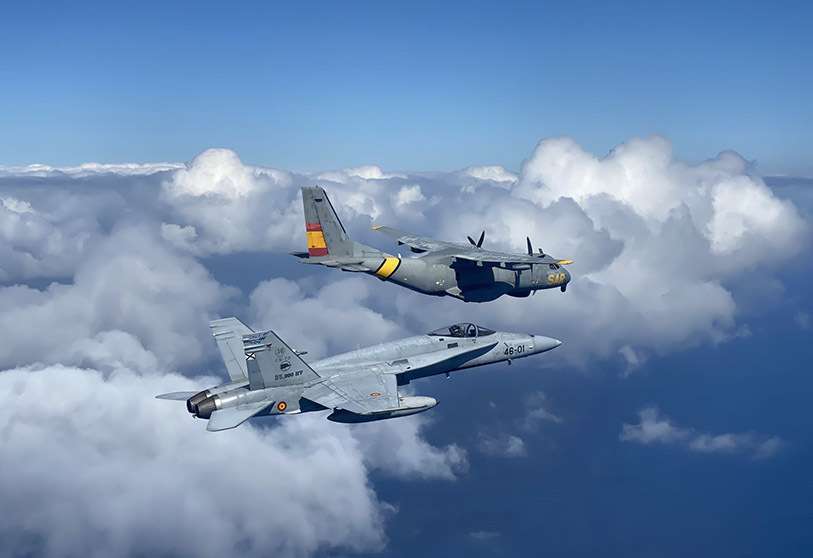Global defence spending

The Spanish defence industry has long been dependent on national armament programmes, and although investment in this area will increase in the coming months and years, the future of these companies depends on their participation in major EU plans and on focusing mainly on the needs of other countries, especially outside Europe.
In this strategy, several key actions need to be taken into account, including the implementation of a roadmap for the diplomacy of high-level state organisations to support the foreign work of these companies, the recovery of the figure of the military attaché in embassies, and the monitoring of the reputation of companies abroad.
The year 2022 has become a key year for the development and boosting of the global defence industry. With the worst of the COVID-19 pandemic behind us, Russia's invasion of Ukraine and tensions between Taiwan and China have led to a flurry of political decisions in favour of increased investment in defence and armaments.
In the United States, President Joe Biden has called for a $753 billion increase in the national defence budget for 2022, 2% higher than that approved in 2021. Germany, meanwhile, has called for an increase in defence spending to 3 % of GDP, according to its Minister of Defence, Christine Lambrecht.
According to the Deloitte report "2022 aerospace and defence industry outlook"1, this increase in demand for military equipment will include unmanned combat aircraft, cybernetic and intelligence solutions. It also refers to the fact that world defence spending will grow by around 2.5% due to the imminent multi-million dollar investments of the main international powers due to geopolitical tensions in Europe and around the China Sea.
In this context, Spanish defence industry companies are seeking to increase their presence on the international scene, above all by participating in major European armaments programmes. To achieve this, the sector must invest more in technology, since public defence investment, although increasing, is not enough to sustain it.
Thus, Spanish companies in the Defence, Security, Aeronautics and Space sectors (which come together in the Defence, Security, Aeronautics and Space Technologies Association, TEDAE) invest 1.9 billion euros, equivalent to 12% of total R&D&I investment in Spain, which places them at the forefront of national innovation, alongside other sectors as powerful in our country as the automotive and pharmaceutical sectors.
In the last decade, the Spanish military industry has been transformed into a small but robust network of high-tech companies with a clear export orientation. The 2008 budget crisis, which led to severe budgetary restrictions on major public defence programmes, led these companies to focus on the foreign market, and between 2014 and 2019 their turnover (in the private sector) grew by 40%, at a rate of almost 7% per year (to reach 14,100 million); despite the fact that the arrival of the Covid-19 pandemic led to losses of 19% according to a recent KPMG report on the activity of the companies grouped in TEDAE.
In addition, these companies generate approximately 47,700 direct jobs, including the civil part of the aeronautical business dependent on Airbus and the small non-military space industry.
For the Directorate General for Armaments and Material (DGAM), the figures provided by the defence sector in Spain are not so high: sales amount to some 6,654 million euros from 354 companies (out of a total of half a thousand that exist), 85% are focused on exports and provide a total of 23,500 jobs (with data from 2021).

In the complex international context, the future of any country's defence industry depends on the use of industrial diplomacy: senior state institutions, especially those in charge of the foreign and economic portfolios, will have to make great efforts to boost the sales of the sector's companies in the different international markets.
One of the great examples of this is France, which, despite severe setbacks such as what happened with the AUKUS, in recent decades its external action has been characterised by significant support for its security and defence companies in their activity across the globe, especially with regard to the "Dassaul Rafale", its 5th generation fighter, in which it has invested more than $50 billion, a large amount for a country that spends approximately $60 billion on armaments and defence each year.
Since 2015, our neighbour has sold this aircraft, which demonstrated its combat capability in different scenarios such as Afghanistan, Libya and Mali, to various countries around the world, including Egypt (30 new units for 3.95 billion), Qatar (36 for 6,3000), India (36 for 7,750), Greece (18 for 2,500), Croatia (12 for 1,000) and the United Arab Emirates (80 for 17,000). In addition to all of them, Indonesia, which this year has already signed up for the acquisition of 42 units of this type of combat aircraft, and even Colombia, which is considering them to replace the Israeli Kfir for its Air Force (FAC).
In total, sales of the 'Rafale' in its various versions to date amount to 38.5 billion euros, making this aircraft and its manufacturer Dassault an indispensable asset of the French defence industry, and one of the driving forces of its economy, thanks in part to the diplomatic activity of the French authorities.
Another of the key points in a future strategy of Spanish defence industry diplomacy is to take advantage of windows of opportunity, especially those that arise when a foreign country and another contractor are unable to reach agreements on how the armament, vehicle, ship or aircraft is designed or how it will be built.
This is what is happening, among others, in the case of the Australian Hunter frigates, conceived under the umbrella of the SEA 5000 programme (valued at more than 22 billion euros), based on the British design of the 'Type 26' ships by the BAE System company, which won over the bids of the Italian Fincatieri (which presented the FREMM) and Navantia (a design inspired by the F-100), with a design that has not yet been tested.
The Spanish public company was the favourite due to its experience in the integration of the Aegis combat system, which, through its subsidiary in this southern country, had already designed and transferred the technology for three Hobart class destroyers based on the model of the Navy's F-100s and which were built in local shipyards.
The Australian navy also has 12 landing craft built in San Fernando and 4 ships started in Ferrol and finished in Australia, 2 of them LHD ships (based on the Juan Carlos I, the flagship of the Navy), and two other logistic ships.

Spain's defence needs concise, medium- and long-term political plans, based on a budget programming law like those of other countries, in order to establish stable financial frameworks.
Despite the foreseeable increase in Spanish public investment in defence, the future of the arms industry (and even the space industry) depends on focusing its activity on international sales, both in Europe and in distant markets with a great interest in renewing their armaments and means of transport.
On their own, our companies have a complicated future, as they not only have to compete against the giant US and Chinese multinationals, which win most of the world's military contracts, but also against their European rivals, of the same or even larger size, specialising in certain specific programmes and enjoying the support of their high institutions and national diplomacy, which, apart from in exceptional cases such as Australia and the French submarines, makes the difference when it comes to winning succulent contracts.
Our country must get its act together in this area, as it is a differential when it comes to closing arms programmes with many countries. It is therefore essential to keep abreast of the problems of companies abroad, to protect their image when incidents occur and a smear campaign is carried out against strategic companies (as happened with Navantia and the Helge Ingstad accident in 2018), and to recover the figure of the military attaché in embassies, consulates and ICEX offices, to obtain information on the armament needs of the country in which they are based and to serve as the first agent in possible future sales.
José Corrochano Ponte, contributor de Sec2Crime
Bibliography:
Couce, B. (19 de febrero de 2022). “La marejada por los retrasos en las fragatas australianas que da alas a los buques «made in» Navantia”. La Voz de Galicia. Extraído de: https://www.lavozdegalicia.es/noticia/somosmar/2022/02/09/marejada-retrasos-fragatas-australianas-da-alas-buques-made-in-navantia/00031644398374729553824.htm
Fernández, María (05 diciembre de 2021). “Ni grandes ni líderes: la industria de defensa española busca su hueco en Europa”. El País. Extraído de: https://elpais.com/economia/negocios/2021-12-05/ni-grandes-ni-lideres-la-industria-de-defensa-espanola-busca-su-hueco-en-europa.html
Redacción (04 de febrero de 2022). “Los problemas en las fragatas australianas Hunter levantan voces a favor de más unidades de diseño español”. Mundo Militar. Infodefensa. Extraído de: https://www.infodefensa.com/texto-diario/mostrar/3428555/problemas-fragatas-australianas-hunter-levantan-voces-favor-unidades-diseno-espanol
Redacción (29 de junio de 2018). Navantia pierde un contrato de 22.200 millones de euros en Australia. El Economista. Extraído de: https://www.eleconomista.es/empresas-finanzas/noticias/9241290/06/18/Navantia-pierde-un-contrato-de-22200-millones-de-euros.html
Palacio, Antonio (03 de febrero de 2022). “El Ejército de Tierra muestra músculo con el nuevo vehículo de combate «8x8 Dragón» en Londres”. El Debate. Extraído de: https://www.eldebate.com/espana/20220203/ejercito-tierra-muestra-musculo-nuevo-vehiculo-combate-8x8-dragon-londres.html
References:
1 “2022 aerospace and defense industry Outlook”. Deloitte. Extraído de: https://www2.deloitte.com/content/dam/Deloitte/us/Documents/manufacturing/us-eri-outlooks-2022-aerospace-defense.pdf
2 Fernández, María (05 diciembre de 2021). “Ni grandes ni líderes: la industria de defensa española busca su hueco en Europa”. El País. Extraído de: https://elpais.com/economia/negocios/2021-12-05/ni-grandes-ni-lideres-la-industria-de-defensa-espanola-busca-su-hueco-en-europa.html
3 Couce, B. (19 de febrero de 2022). “La marejada por los retrasos en las fragatas australianas que da alas a los buques «made in» Navantia”. La Voz de Galicia. Extraído de: https://www.lavozdegalicia.es/noticia/somosmar/2022/02/09/marejada-retrasos-fragatas-australianas-da-alas-buques-made-in-navantia/00031644398374729553824.htm
